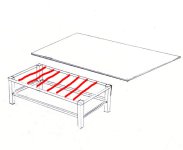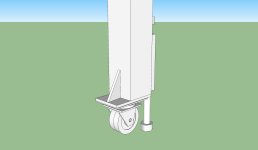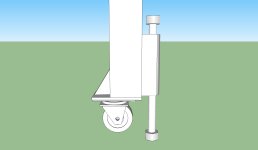Good comments, all. :thumbsup: Thanks.
Well, the top will be made with what I have. It was available and for the right price. Would have liked it to be thicker, but
$$ were a major factor. I will add more stiffeners as several of you have suggested.
The reason for the size is because I build a lot of livestock panels, gates and other long things. The table will sit in the middle of my workarea so I will be able to get to the work from all sides.
My welding table for the past couple of years has been a 2.5'X5.5'X3/4", plywood, folding work table with a 20"X36"X1/4" piece of diamond plate set on top for the welding area. Believe me what I am about to build will be like moving from a tricycle to a Mahindra 8560.

The casters will allow me to move the table out of the way when it is not needed. When finished, the table will weigh around 650 to 700 lbs. The casters are rated at 300 lbs. I figured with four casters supporting the total weight, they should each be loaded with 225 lbs max.
I will be adding a leveller/brake at each leg made from a piece of heavy angle and 3/4"X6" bolts. Will try to post a picture of a mockup today for you to check out.
Still waiting on the metal for the frame so have been working on the small stuff.
Thanks again for all the pointers and keep 'em comin'.






